 Project Brief
Project Brief
The Monster Inside Me is an illustrated story book that highlights the everyday struggle for people with mental illnesses. Through text, motion, and interactive experience, The Monster Inside Me aims to explore and understand mental health; breaks down the social stigmas and prevent suicide through individual education.
Time Line
Designer
Advisor
12/2020-present
Olivia Zhu
Adam Smith,
Mike Strobert
Deliverables
Software
A pdf of the completed story book, a 3-minute video, and promotional materials.
After Effect, Photoshop, Illustrator, Cinema 4D, InDesign
 About the Book
About the Book
The Monster Inside Me is a self-help book for people with mental illness. It unfolds a story from a first-person viewpoint that highlights the everyday struggle for people who suffer from the disease. By comparing mental disorders to a monster living inside an individual’s mind, the book illustrates mental illness in a different and more comical way, makes mental illness appears more manageable.
⁉️ Problem
Having a mental illness can affects all major aspects of an individual’s life. From basic needs such as shelter and employment, to interactions with family and friends. According to CDC, nearly 25% of the US adults have a diagnosable mental illness. Among which, 20% of the patients suffer from a severe condition. Mental illness has fast become the leading cause for substance abuse and disability, affecting about 23% of the population in the US in a given year. However, in spite of this devastating situation, only 45% of the patients received some form of treatment.

Study shows that the number one reason people fail to seek help is because most people are afraid of being stigmatized if they admit they need help. Most people struggling with mental illness are in a less secure position. Being unsure about themselves and their position in life has made it difficult for patients to admit their problem to doctors, spouses, or even themselves.
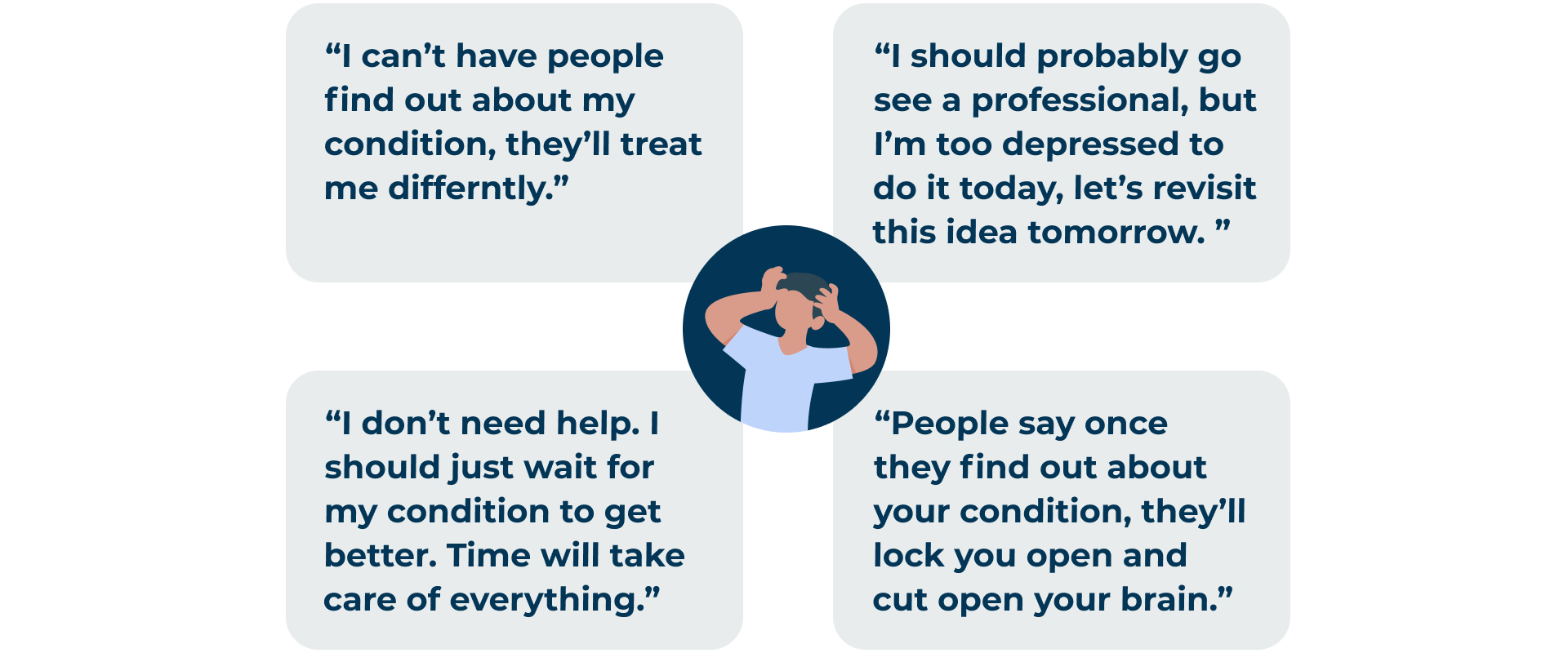
‼️ Solution
Start by confronting the misconceptions associated with mental illness, this project encourages people to face their conditions and open up with their feelings. By illustrating mental illness into a tangible thing, the book shows that the “monster” is controllable and can be defeated.
👉 Audience
The project is designed as a self-help book for people who have been diagnosed with mental illness and those who are experiencing mental health condition but have yet to seek help from the professionals.
🎯 Goal
The first step to solve any problem is to acknowledge its presence. As a self-help book, The Monster Inside Me aims to bring forth the recognition and acceptance of mental illness; provide proper guidance that will help patients better cope with their condition and encourage those in need to seek help from the professionals.

📇 User Research
 Summary
Summary
 Competitive + comparative analysis
Competitive + comparative analysis
Mental illness has long been a problem around the world; luckily the awareness of mental illness has been growing in recent years. A significant reason behind this progress is the increasing amount of media campaigns, promotional videos, and research studies done by individuals and organizations bringing to light the importance of mental health care. Below are some of the references and inspirations I found online. By reviewing and listing out the pros and cons of each design, I’ve developed a better understanding for my project.

😯 Project Highlights
01. Animated V.S static illustration storybook:
Comparing to a trditional static illustration book, an animated storybook can better stimulates a reader's interest, holds their attention and maintain their engagement. When information like text, motion and sound are simultaneously available, it supports the integration of the contant better than if conveyed by words alone.
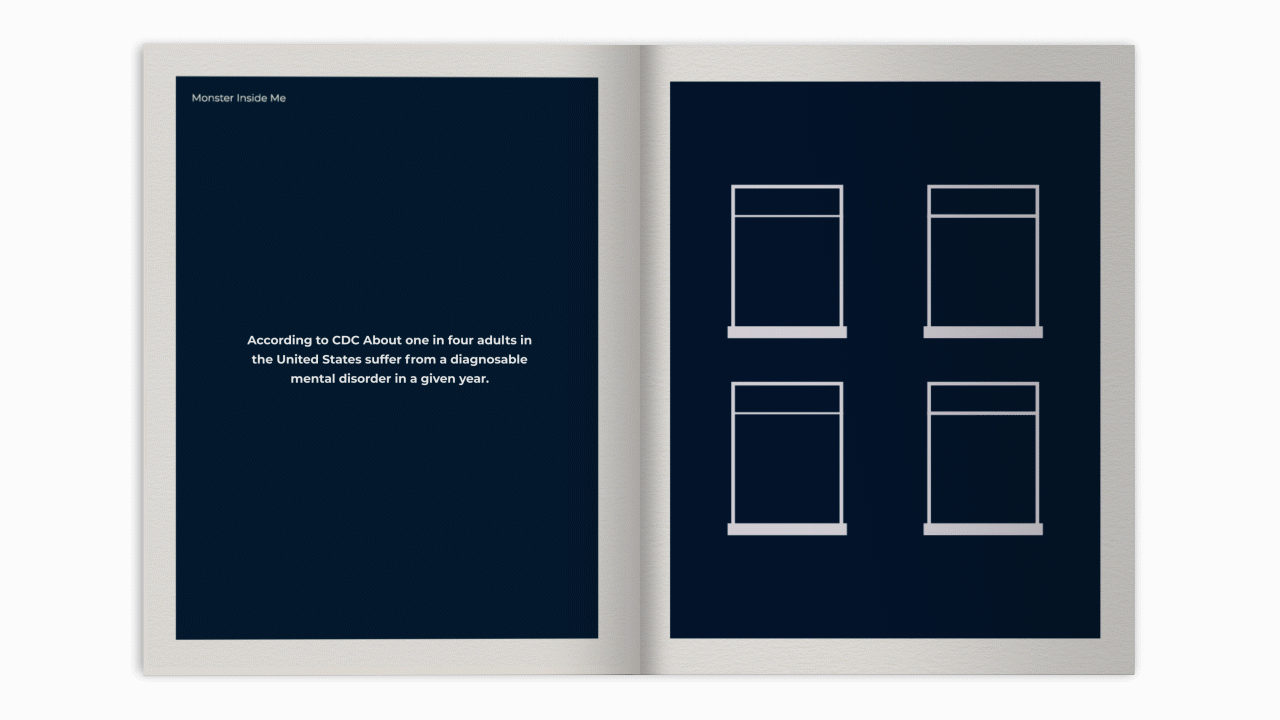
02. Immersive Experience:
The opening animation made with Cinema 4D acts like a hook to my story, when the camera zooms in on to the book and the text appears in front of the reader’s view, it successfully invites the reader into the scene. Through a series of camera work and sound affect, this animation will draw the reader into the story.
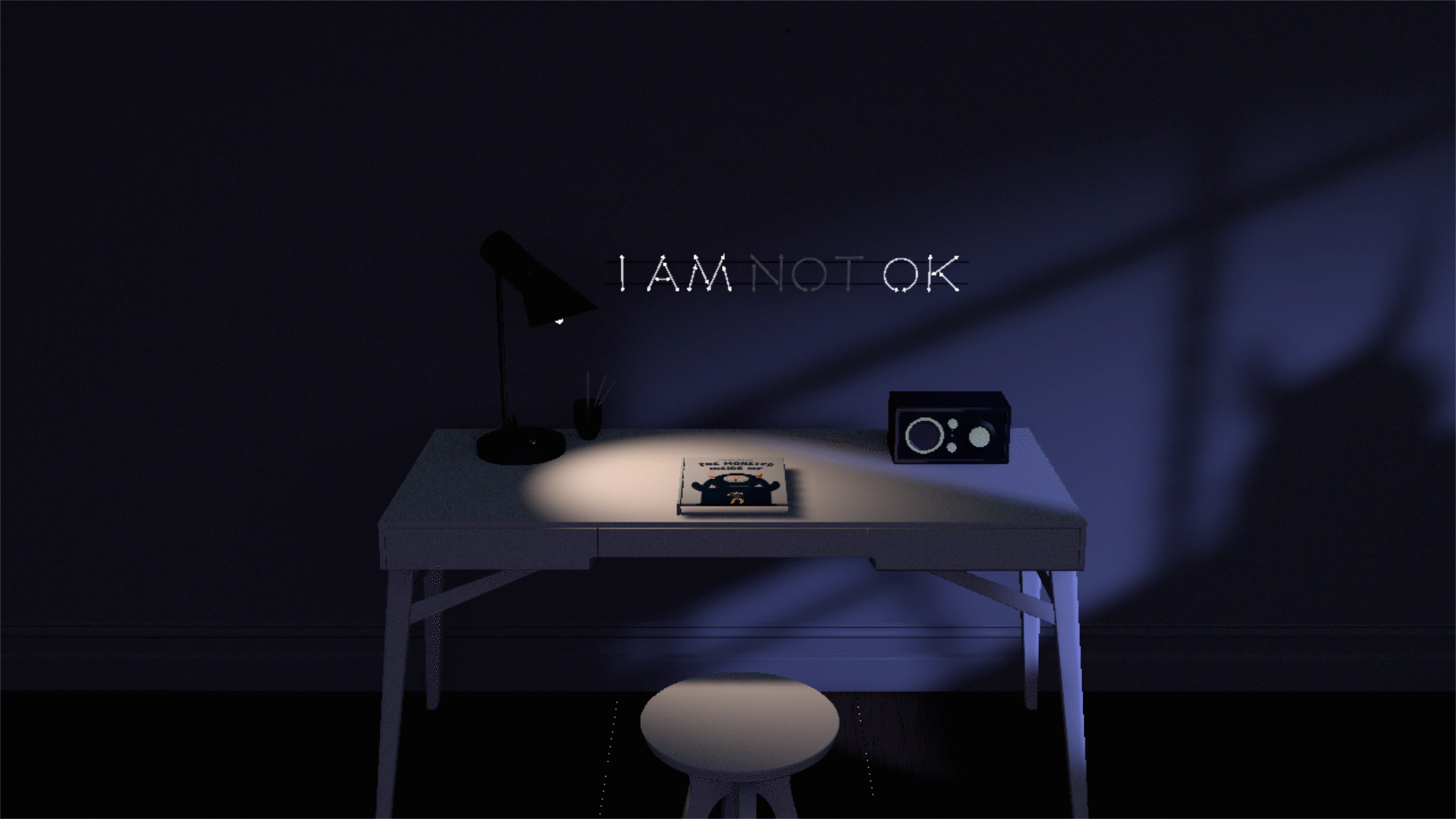
03. First Person View-point
When unfolding the story from a first person view-point, the distance between the reader and the story is almost nonexistent. In this way, the book can quickly build a rapport with the reader. By sharing a personal story directly with them like this, it is going to bring the reader in and made the story appears more credible.
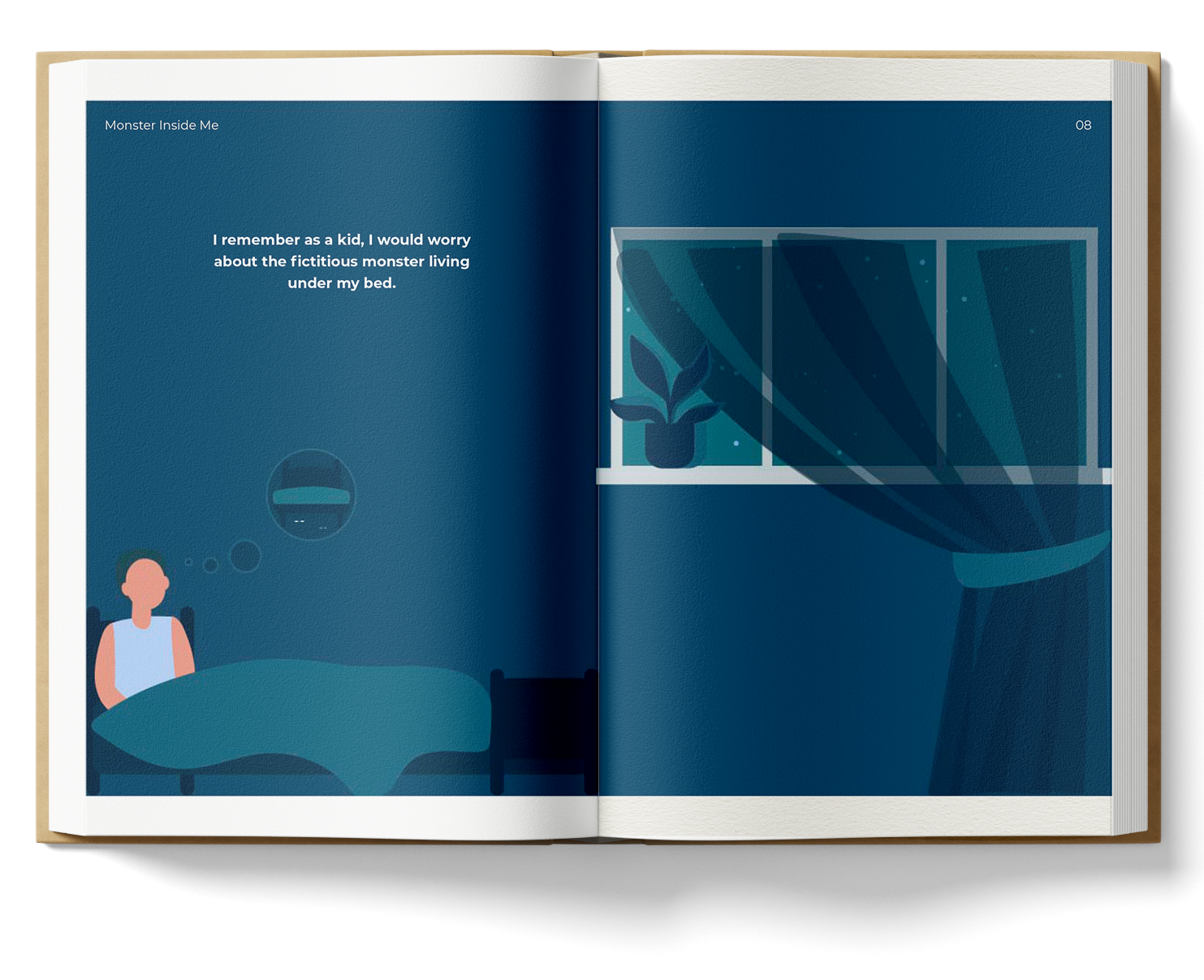
04. Comical Illustration:
Due to the intangible nature of mental illness, it is sometimes hard to explain and interpret the disease to another person. By comparing mental disorders to a monster living inside an individual’s mind, the book illustrates mental illness in a different and more comical way, makes mental illness appears more manageable.
![sketches [已恢复]-25](https://designed.cad.rit.edu/vcdthesis/wp-content/uploads/sites/9/2021/05/sketches-已恢复-25.jpg)
05. Voice Over and Text Animation:
The narration scripts aimed to captivate the reader’s imagination, is allowing them to create mental pictures of the situations and characters. Accompany the voice over, the animated text will help the reader to keep track of the story. In addition, this can also maintain a nice balance between the animation and the story itself.
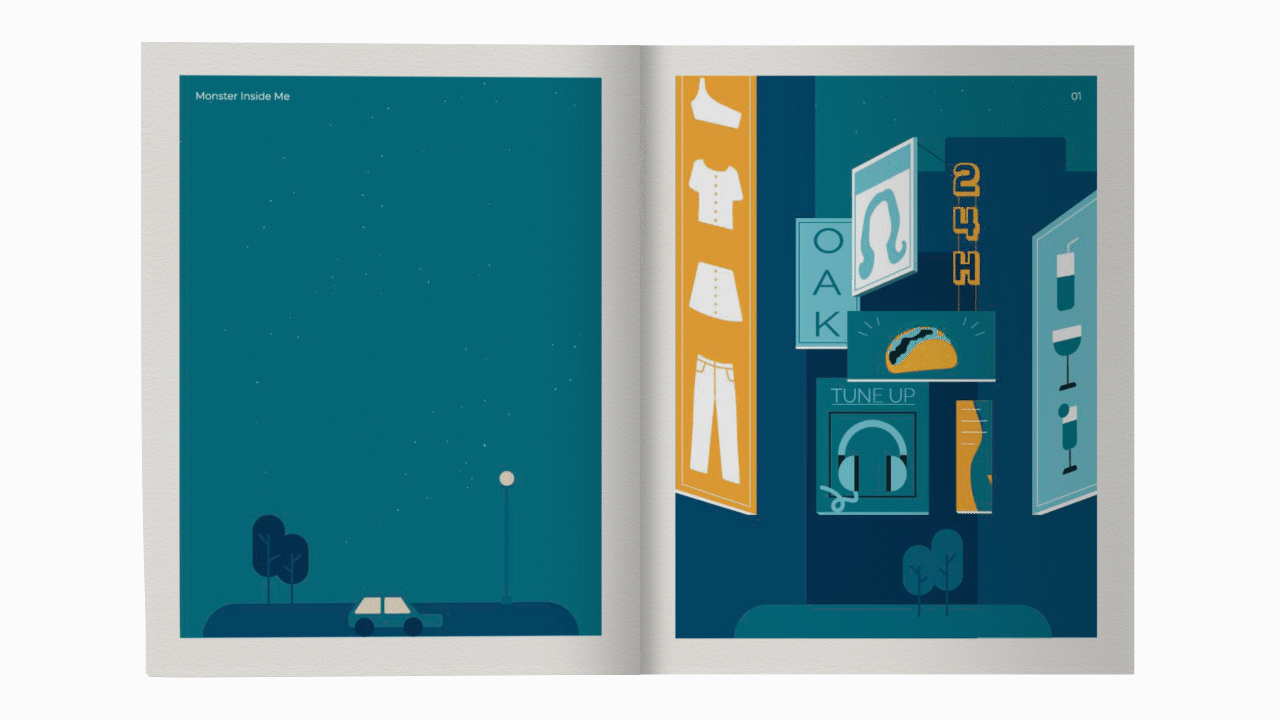

👀 Project Details
Main Characters:
The two main characters are the monster and the guy. The monster is essentially a metaphor of mental illness, and the guy on the hand has long been suffering from a poor mental health condition. The monster was illustrated with a specific facial feature for a reason, to provide a better visualization of this character. While the guy was illustrated without a facial expression so that the reader can put themselves as a character inside of the story while they read.

The Book:
The story start with...
Opening and Closing Animation:
This is a crucial part of the project...
Animated Page:
A series of animation principles has been considered and applied...

🗂 Design Process
Sketches:
Primitive sketch includes storyboard, character illustrations, and other initial sketches.
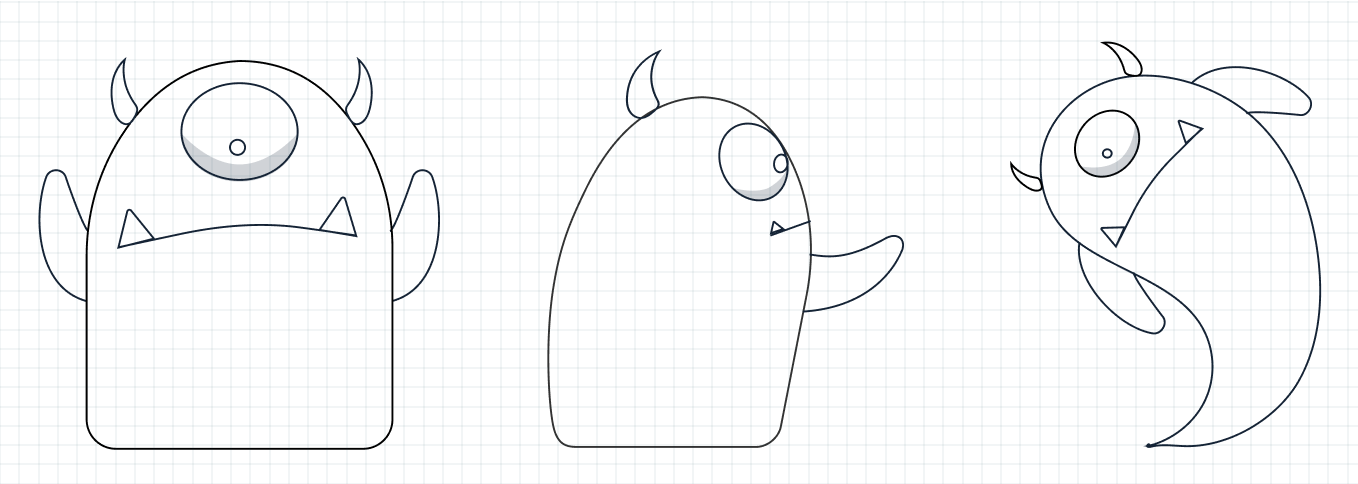
Book:

Motion:

3D Model:

